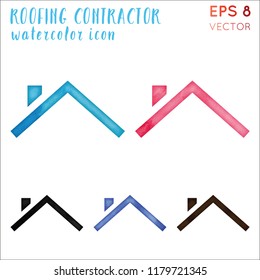The Effectiveness Of Your Industrial External Painting Job Is Very Closely Connected To Weather-- Discover Exactly How It Can Either Support Or Impede Your Preferred Outcomes
The Effectiveness Of Your Industrial External Painting Job Is Very Closely Connected To Weather-- Discover Exactly How It Can Either Support Or Impede Your Preferred Outcomes
Blog Article
Material Writer-Cash Kofoed
When you're intending a commercial external paint task, don't take too lightly the effect of weather on your results. You need to think about elements like temperature level, humidity, and precipitation, as they can make or break your paint task. For instance, did you recognize that optimal problems call for details temperature varieties and humidity degrees? Falling https://interior-painter-near-me56655.blogofchange.com/33840620/get-ready-to-be-inspired-by-the-striking-changes-made-by-paint-specialists-as-they-convert-average-settings-right-into-phenomenal-art-pieces to keep an eye on these elements can bring about uneven surfaces or perhaps damage to fresh paint. Understanding go to this site is key to accomplishing a durable, expert result. So, what particular weather should you watch out for?
Temperature level Considerations
When it involves industrial outside paint, temperature level plays a crucial role in the result of your job. If you're painting in extreme warm, the paint can dry out too swiftly, resulting in concerns like poor attachment and uneven surfaces. You intend to go for temperature levels in between 50 ° F and 85 ° F for the very best results. Below 50 ° F, paint might not cure effectively, while over 85 ° F, you take the chance of blistering and breaking.
Timing your task with the best temperatures is important. Beginning your work early in the morning or later in the mid-day when it's cooler, specifically during warm months.
Likewise, consider the surface area temperature level; it can be significantly higher than the air temperature, especially on sunny days. Use a surface thermometer to check this before you start.
If temperature levels are unpredictable, keep an eye on the weather forecast. Unexpected temperature declines or heat waves can derail your strategies. You don't wish to begin repainting just to have the problems transform mid-project.
Moisture Degrees
Moisture degrees significantly influence the success of your business exterior paint project. When the moisture is expensive, it can prevent paint drying and healing, bring about a range of problems like bad adhesion and finish quality.
If you're preparing a task during wet problems, you could find that the paint takes longer to dry, which can extend your project timeline and rise costs.
On the other hand, reduced moisture can also position challenges. Paint might dry as well promptly, avoiding correct application and resulting in an uneven finish.
You'll wish to check the humidity levels carefully to ensure you're working within the perfect variety, normally in between 40% and 70%.
To obtain the best results, take into consideration using a hygrometer to measure moisture before starting your job.
If you discover the levels are outside the optimum array, you might need to readjust your routine or choose paints designed for variable conditions.
Always seek advice from the maker's standards for specific suggestions on moisture tolerance.
Precipitation Effect
Rain or snow can dramatically disrupt your industrial exterior paint plans. When rainfall takes place, it can get rid of newly used paint or develop an uneven surface. Preferably, you intend to choose days with completely dry climate to make certain the paint sticks effectively and remedies efficiently. If you're caught in a rain shower, it's finest to halt the project and wait for conditions to enhance.
Furthermore, snow can be much more damaging. Not only does it develop a damp surface, yet it can also decrease temperatures, making it difficult for paint to completely dry. This can bring about concerns like peeling or blistering down the line.
It's important to check the weather report before starting your task. If rainfall or snow is anticipated, take into consideration rescheduling.
Constantly keep in mind to allow sufficient drying out time in between layers, especially if the weather stays unpredictable.
Conclusion
Finally, keeping an eye on the weather condition is crucial for a successful business outside painting job. By checking temperature, moisture, and rainfall, you can make certain the very best conditions for application and healing. Bear in mind to prepare your job around desirable weather and constantly adhere to manufacturer standards. With the ideal approach, you'll attain a lasting, beautiful finish that can stand up to the components. Don't allow the weather catch you off-guard-- remain notified and paint smart!
